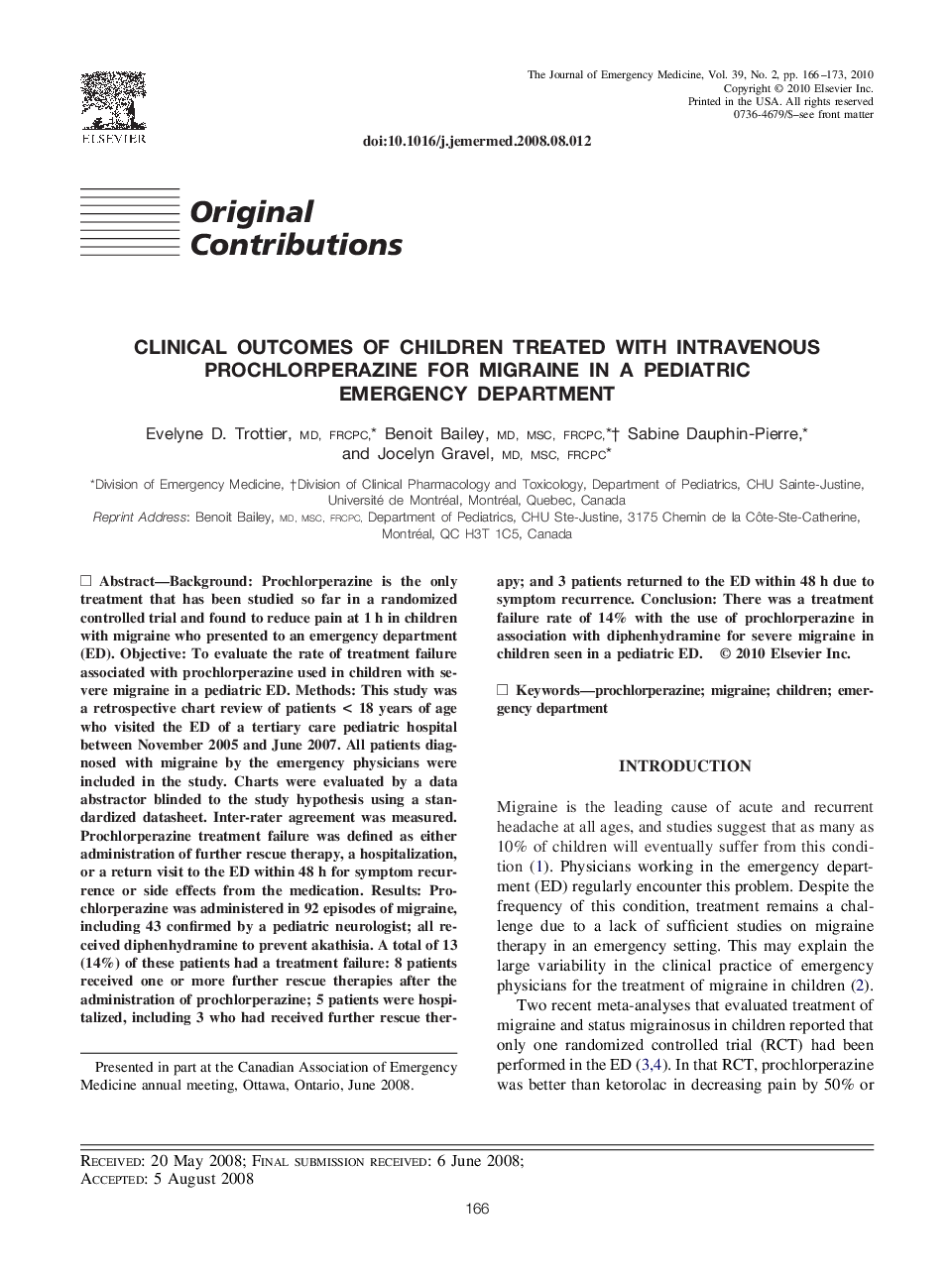| Article ID | Journal | Published Year | Pages | File Type |
|---|---|---|---|---|
| 3250303 | The Journal of Emergency Medicine | 2010 | 8 Pages |
Background: Prochlorperazine is the only treatment that has been studied so far in a randomized controlled trial and found to reduce pain at 1 h in children with migraine who presented to an emergency department (ED). Objective: To evaluate the rate of treatment failure associated with prochlorperazine used in children with severe migraine in a pediatric ED. Methods: This study was a retrospective chart review of patients < 18 years of age who visited the ED of a tertiary care pediatric hospital between November 2005 and June 2007. All patients diagnosed with migraine by the emergency physicians were included in the study. Charts were evaluated by a data abstractor blinded to the study hypothesis using a standardized datasheet. Inter-rater agreement was measured. Prochlorperazine treatment failure was defined as either administration of further rescue therapy, a hospitalization, or a return visit to the ED within 48 h for symptom recurrence or side effects from the medication. Results: Prochlorperazine was administered in 92 episodes of migraine, including 43 confirmed by a pediatric neurologist; all received diphenhydramine to prevent akathisia. A total of 13 (14%) of these patients had a treatment failure: 8 patients received one or more further rescue therapies after the administration of prochlorperazine; 5 patients were hospitalized, including 3 who had received further rescue therapy; and 3 patients returned to the ED within 48 h due to symptom recurrence. Conclusion: There was a treatment failure rate of 14% with the use of prochlorperazine in association with diphenhydramine for severe migraine in children seen in a pediatric ED.
